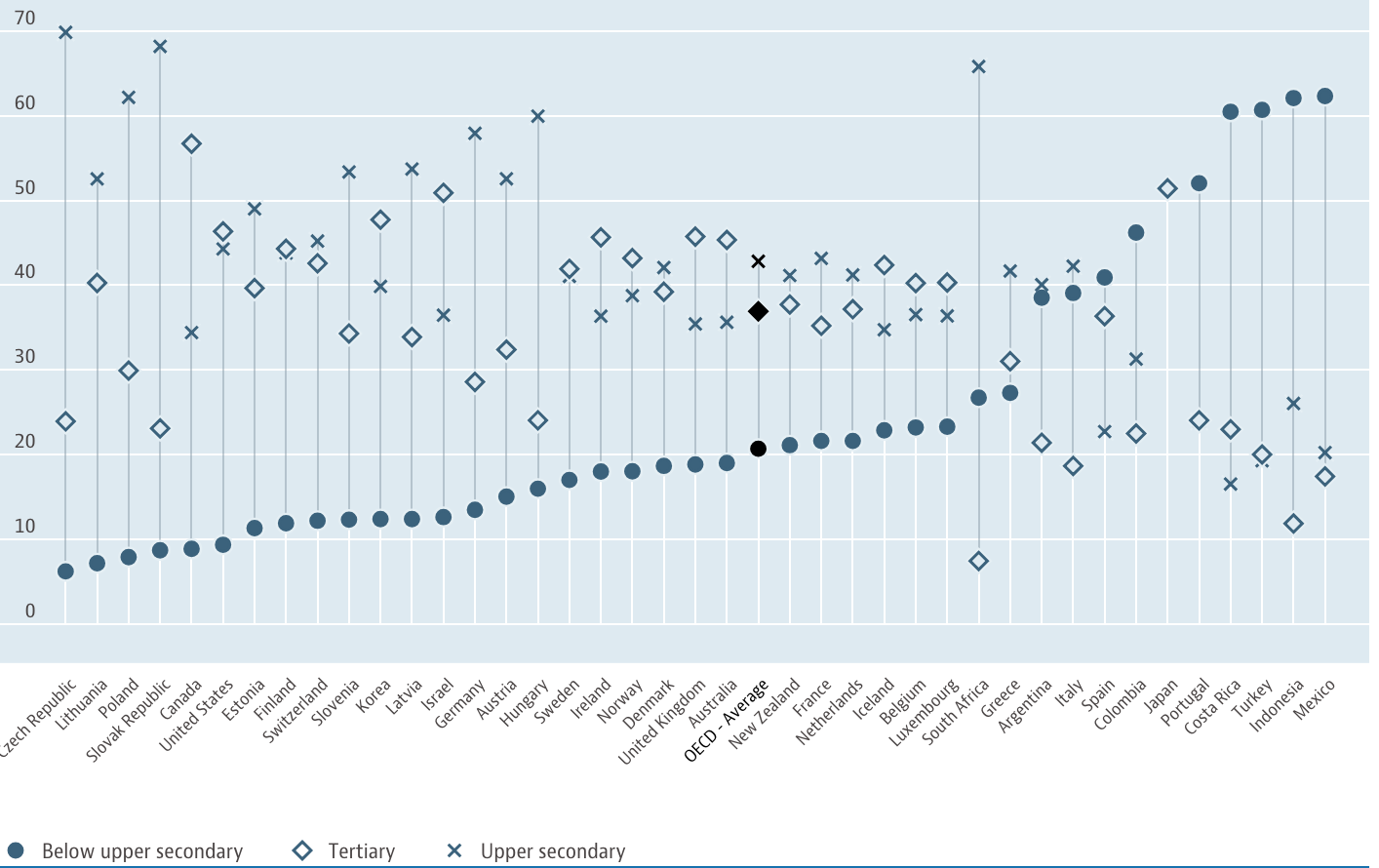How does every country rank when it comes to the education levels of their adult populations? Two reports offer some insight into the percentage of country’s populations that have completed primary, secondary and tertiary education levels.
U.S. News and World Report recently ranked the United Kingdom as the number one country for education. But data from the Organisation for Economic Co-operation and Development (OECD) shows that others, like South Korea and Canada, are actually doing better.
The U.S. News and World Report says that education is “one of the best predictors of a nation’s future success.” According to its rankings, the top five countries with a successful future are the United Kingdom, United States, Canada, Germany and France. At the bottom are Pakistan, Nigeria, Ghana, Angola and Iraq.
Their ranking is based on perception surveys that asked participants to judge how well-developed public education system of a country is, if they would consider attending university there and if the country provides top-quality education.
But what does quantitative data show? How are countries actually progressing toward Sustainable Development Goal 4 of ensuring inclusive and equitable quality education and promoting lifelong learning opportunities for everyone?
The OECD is an intergovernmental economic organization made up of 36 of the world’s most advanced countries as well as emerging economies. According to the OECD’s latest figures on its members’ education levels, South Korea has the largest proportion of highly-educated young adults. In 2017, nearly 70 percent of its 24- to 35-year-olds attained tertiary education, which includes university and vocational programs.

This is a massive increase in schooling level compared to just one generation ago: Only 21 percent of South Korea’s 55- to 64-year-olds completed tertiary education.
And, it’s a big step for the country toward achieving several targets under Sustainable Development Goal 4, including ensuring “equal access for all women and men to affordable and quality technical, vocational and tertiary education” as well as “substantially increasing the number of youth and adults who have relevant skills…for employment, decent jobs and entrepreneurship.”
Following behind South Korea in the 24-to-35 age bracket are Canada (61 percent), Japan (60 percent), Russia (58 percent) and Lithuania (56 percent). The U.K. comes in eighth at 52 percent and the U.S. comes in 13th at 48 percent.
When looking at the larger group of adults age 24 to 65 who have completed tertiary education, Canada comes in at the top with 57 percent. Second is Japan at 51 percent.
But progress toward quality primary and secondary education is also a key target for Sustainable Development Goal 4. According to the OECD, the Czech Republic has the highest percent of high-school educated adults, with 70 percent of its 24- to 65-year-olds having completed upper secondary education. Others at the top include Slovakia (68 percent), South Africa (66 percent), Poland (62 percent) and Hungary (60 percent).
Globally, there has been significant progress in educational attainment over the last few decades. However, the OECD warned in a September report that data show that inequities that manifest early in life – including socio-economic status, gender, immigrant background and geographic location – “tend to accumulate throughout life, first in education and then in the labor market.” Among those inequities, the report says that socio-economic status has the biggest impact not only on participation in education but also economic and social outcomes.
But participation in higher education is “more important than ever,” the report says, as technological advancement is pushing out lower-skilled jobs. It appears then that despite perceptions that the U.K. and U.S. have the world’s best education, it’s countries like South Korea and Canada that are setting up their people for success.
